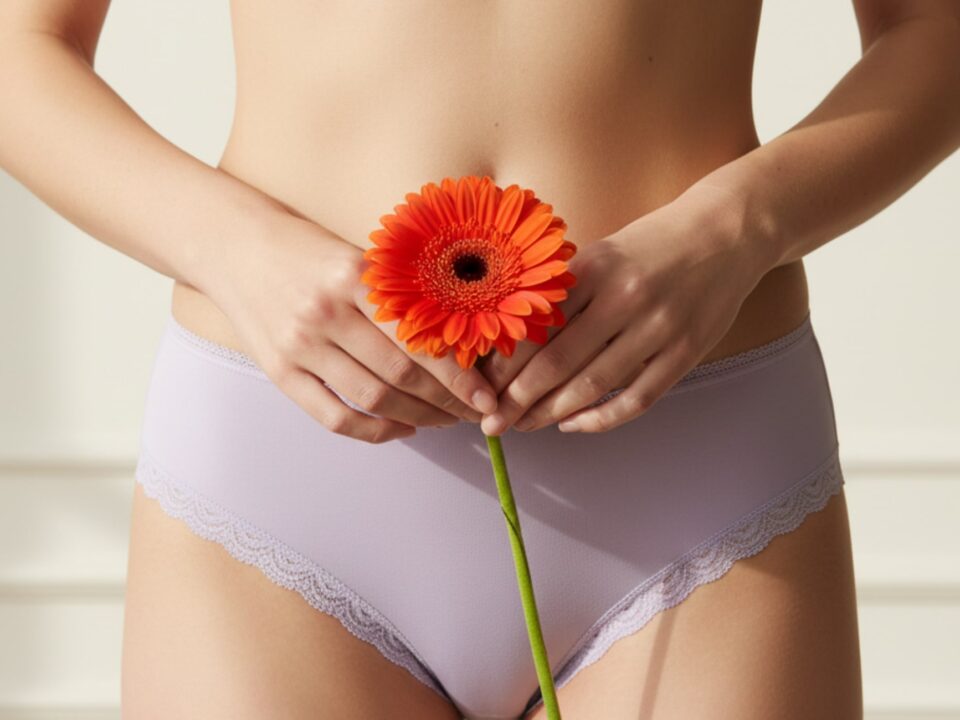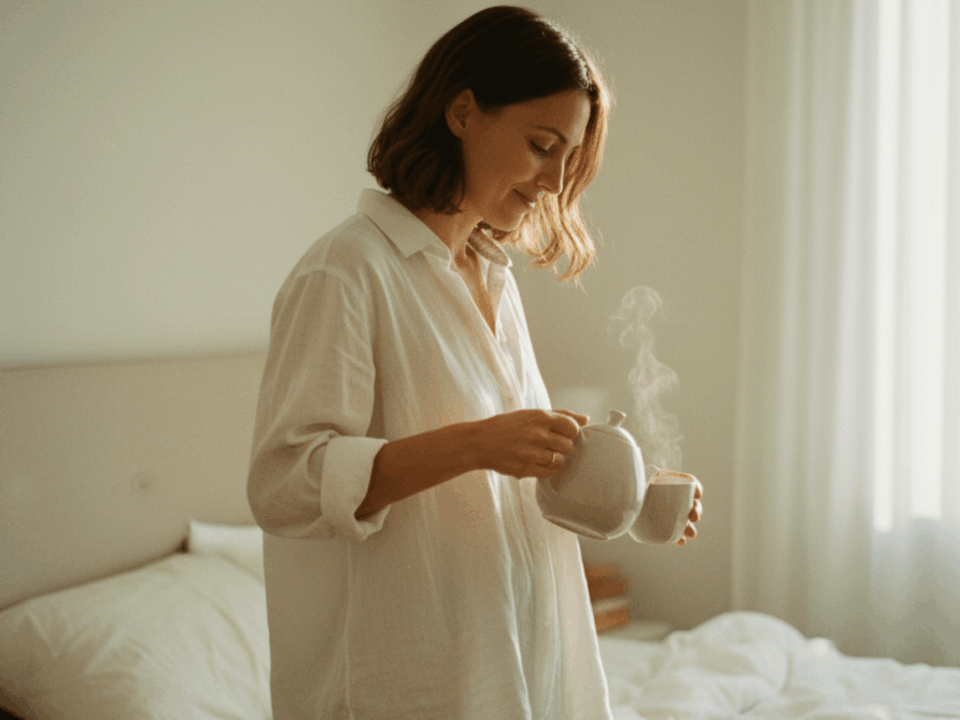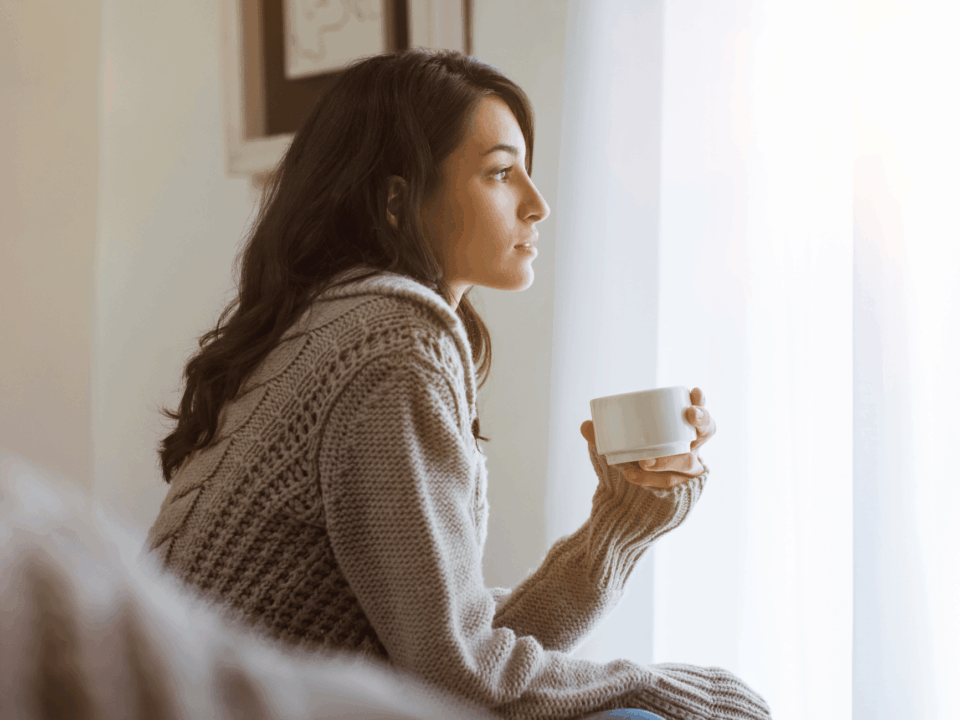
Understanding and easing menstrual pain – natural help for you
15 de August de 2025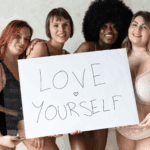
Learning self love as a woman – with body, heart and cycle
10 de September de 2025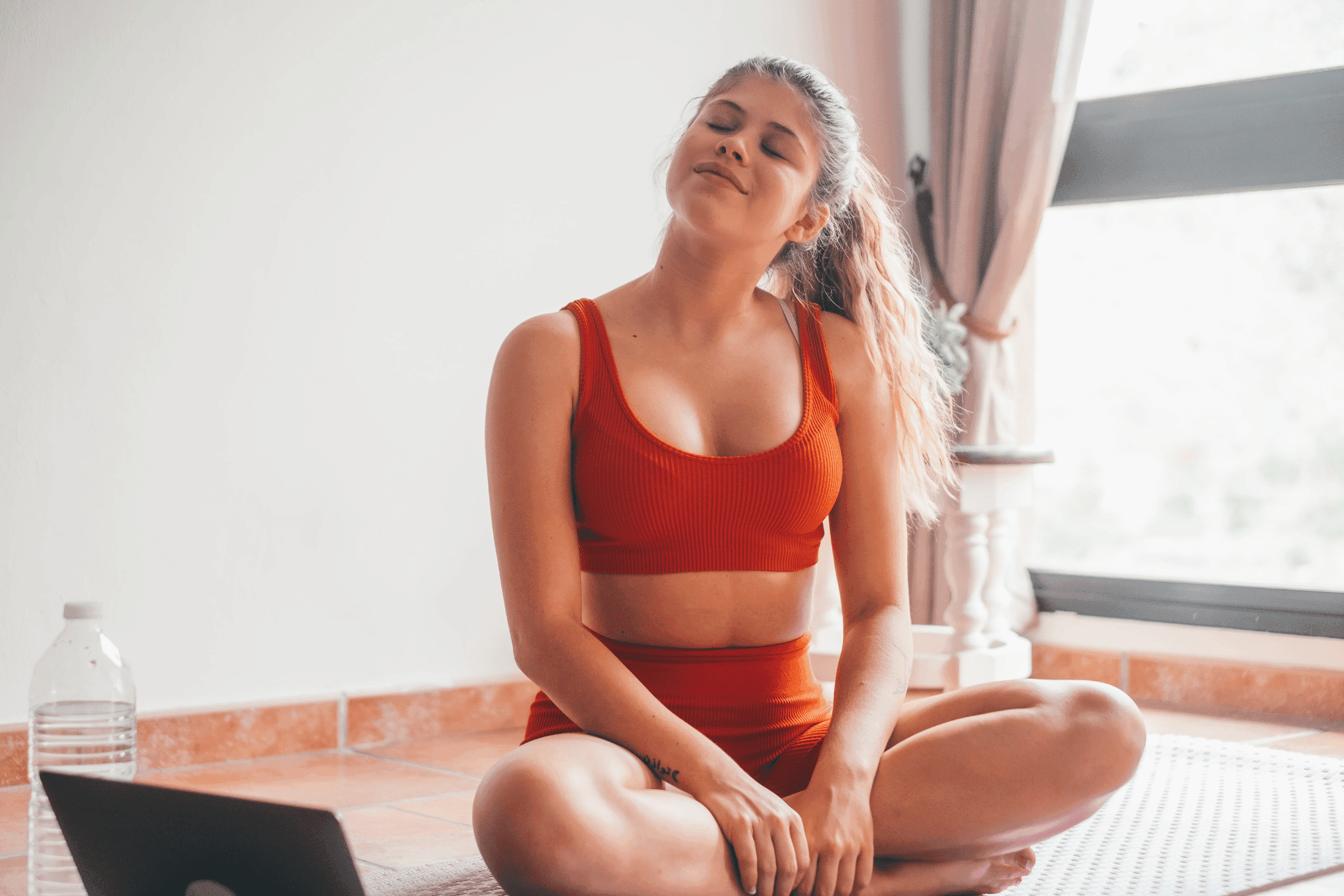
Exercise during your period: Find out which exercises help and how a menstrual cup and disc can safely accompany you.
Inhaltsverzeichnis
- How exercise can influence the cycle and relieve period pain
- Should you exercise during your period?
- Which exercise is good during your period?
- Using a menstrual cup or menstrual disc during sport
- Period tips for your training
- Frequently asked questions (Q&A) – exercise during your period
- Conclusion: moving through your period with self-care
Exercise during menstruation – is that really a good idea? Many people experience fatigue and discomfort during their period. But movement and gentle activity can actually support period pain relief and ease period cramps. This article is here to encourage you: find out which types of exercise during your period can be beneficial, what you should keep in mind, and when rest is more important than training. You will also discover how sport can influence your cycle and period pain, and whether regular activity can help if you’ve ever wondered “does exercise help period cramps?”. Keep reading for practical tips on managing your period while working out, including guidance on using a menstrual cup for sport or a menstrual disc during exercise.
How exercise can influence the cycle and relieve period pain
You may have heard that movement can ease menstrual symptoms. In fact, gentle physical activity promotes blood circulation in the pelvic area and relaxes the muscles, which can reduce period cramps. Regular activity can therefore support period pain relief and even help with PMS. The key point is: it’s not about records or peak performance. A simple walk, gentle yoga or light cycling can often work wonders. During exercise, your body also releases endorphins – the so-called happiness hormones – which act as natural painkillers and lift your mood. Many people report feeling generally better when they chooseexercise during their period. In a global study, 82% of participants said that movement during menstruation made them feel good.
Does exercise affect menstruation? The answer is yes. Sport influences the menstrual cycle, usually in a positive way: moderate activity can actually support your cycle by reducing stress and balancing hormone levels. However, with very intense training or severe underweight, the opposite may occur – in extreme cases, periods may stop altogether (known as hypothalamic amenorrhoea). Up to 30% of women who engage in highly intensive training experience a loss of menstruation due to such hormonal changes. This mainly affects professional athletes and should not be considered normal but rather a signal from the body of overstrain.
For most of us, however, the rule is simple: moderate exercise influences the cycle positively or at least neutrally. You are not less capable during your period, as long as you feel comfortable. Listen to your body and find your own balance.
Should you exercise during your period?
The short answer: if you feel like it, yes! There is no medical reason to avoid exercise during menstruation – quite the opposite, movement can help relieve menstrual discomfort and support period pain relief. The most important thing is to listen to your body. On some days you might feel full of energy despite your period, while on others the period cramps may be so intense that all you want is a hot water bottle and the sofa. Both are perfectly fine. You should do sport during your period if it feels good, but it is just as valid to rest if your body needs a break.
Keep in mind that hormonal fluctuations throughout the cycle also affect your energy and mood. In the first half of the cycle (around your menstruation and afterwards), many people feel stronger and more resilient, and more intense training is often easier. In the second half, leading into the PMS phase, performance capacity tends to drop slightly. Exercise during your period is therefore not a must, but an option: find out what works best for you on any given day. If you suffer from severe abdominal pain on the first day of bleeding, rest and warmth may be more important than a workout. Yet even a short walk or some light stretching can make you feel better – give it a try. And if your body craves sleep and chocolate, allow yourself that without guilt. You don’t need to be a supergirl just because your training plan says so. Your health always comes first.
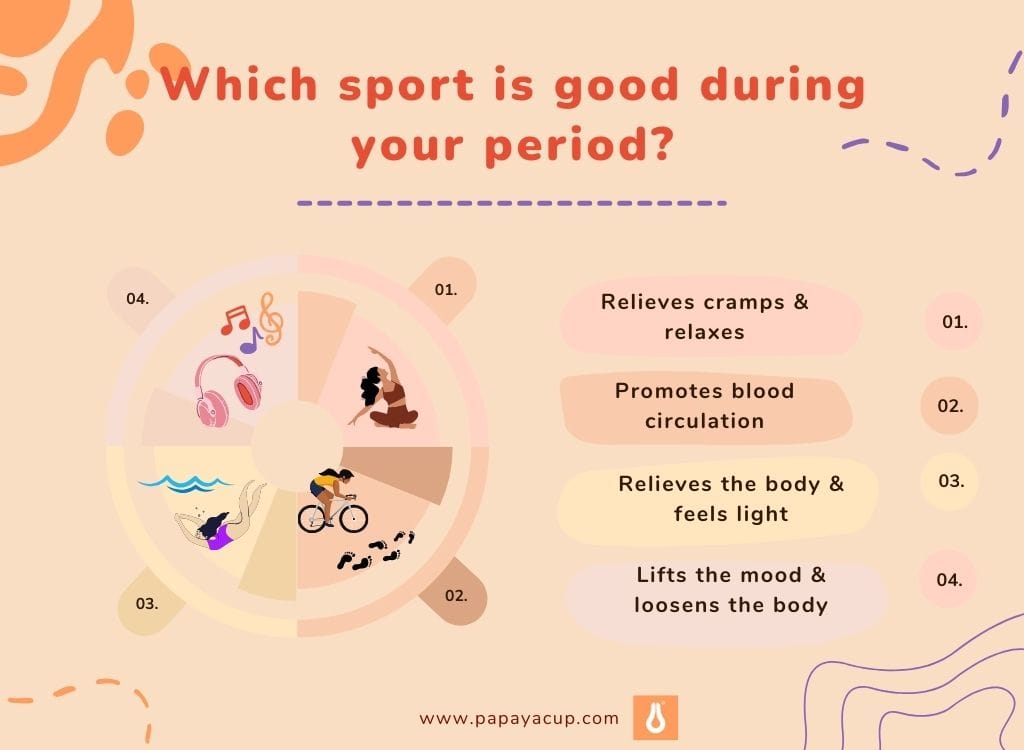
Which exercise is good during your period?
Not every type of sport feels equally good during menstruation. As a general rule: do whatever feels right for you. Here are some recommendations for exercise during your period that many find particularly beneficial:
- Yoga and Pilates: Gentle movements and stretches are ideal for easing period cramps. Specific yoga poses for period pain relief, such as child’s pose (Balasana), the reclining butterfly or gentle backbends, can help relax the lower back and abdomen. A simple yoga video at home is perfectly sufficient – it doesn’t need to be power yoga. Be mindful not to overdo it: this is the time for feel-good yoga rather than demanding flows.
- Walking or light endurance training: A walk in the fresh air can work wonders. The moderate pace stimulates your circulation without exhausting you. Gentle cycling or swimming at a comfortable pace are also great options if you feel up to it. They improve blood flow and provide oxygen and daylight – good for both body and mind.
- Gentle strength training: If you’re in the mood for the gym or a home workout, you can absolutely do strength exercises during menstruation. Many notice, however, that they have slightly less energy on heavy bleeding days. If in doubt, reduce the weights or intensity. Focus on technique and the feel-good factor: this isn’t the time for personal bests but for movement that gives you strength rather than drains it.
- Dancing and light cardio: Rhythmic activities such as dancing, aerobics to your favourite music or a relaxed Zumba class can lift your mood and ease tension. As long as you’re enjoying yourself and it doesn’t get too intense, these activities are an excellent choice.
- Swimming: Many people swear by swimming during their period. The water supports the body and makes you feel almost weightless. With the right product, such as a menstrual cup for sport, you don’t need to worry about leaks. Just make sure the water isn’t too cold, as low temperatures can sometimes intensify cramps.
Which exercises help with period cramps?
Anything that stimulates blood circulation and provides gentle stretching can be beneficial. Alongside yoga poses, relaxation techniques and light stretching are also effective for period pain relief. For example, you can do the cat-cow pose from a hands-and-knees position to ease tension in the back and abdomen. Another simple stretch: take a step forward into a lunge and gently press your hips downwards – this stretches the hip flexors and can reduce pressure in the lower abdomen. In general, gentle exercise for menstruation often works like an internal massage. Try out what feels good for you, and don’t forget to breathe deeply.
Using a menstrual cup or menstrual disc during sport
Whether you’re going for a run, doing yoga or swimming, during your period you want to move freely without constantly thinking about hygiene products. Tampons and pads can feel uncomfortable or disruptive during workouts (who hasn’t experienced a slipping pad mid-exercise?). Fortunately, there are modern alternatives: the menstrual cup and the menstrual disc. Both are excellent for menstruation and sport, as they provide reliable, leak-proof protection and high comfort for hours – making them ideal options when choosing a menstrual cup for sport or other active period products.
Can you do sport with a menstrual cup?
Yes – absolutely! A menstrual cup stays securely in place inside the vagina thanks to a gentle suction seal, and it won’t move even when you’re active. This means you can confidently do sport with a menstrual cup, whether it’s running, fitness training, yoga or even swimming. A properly fitted cup doesn’t leak and is barely noticeable when you move. Many active people value exactly this: no bulky pad, no tampon string shifting out of place, just a secure and invisible feeling. The important thing is that the cup is positioned correctly and fully opened. If you’re new to the cup, it’s a good idea to practise inserting and checking the fit on a quieter day before running a marathon. In general, though, the right menstrual cup ensures you can feel completely at ease during exercise on your period.
Menstrual cup for sport – the benefits:
Depending on the model, you can wear it for 8–12 hours, making it suitable even for longer training sessions without having to change. Thanks to its flexible material, it adapts to your body and avoids friction. Swimming is also possible, as no water enters the vagina the way it can with tampons. And since the cup sits internally and creates a vacuum seal, you don’t have to worry about leaks during movement or even inversions (such as headstands in yoga). If your flow is particularly heavy, it’s best to empty the cup before exercise – then you’re on the safe side.
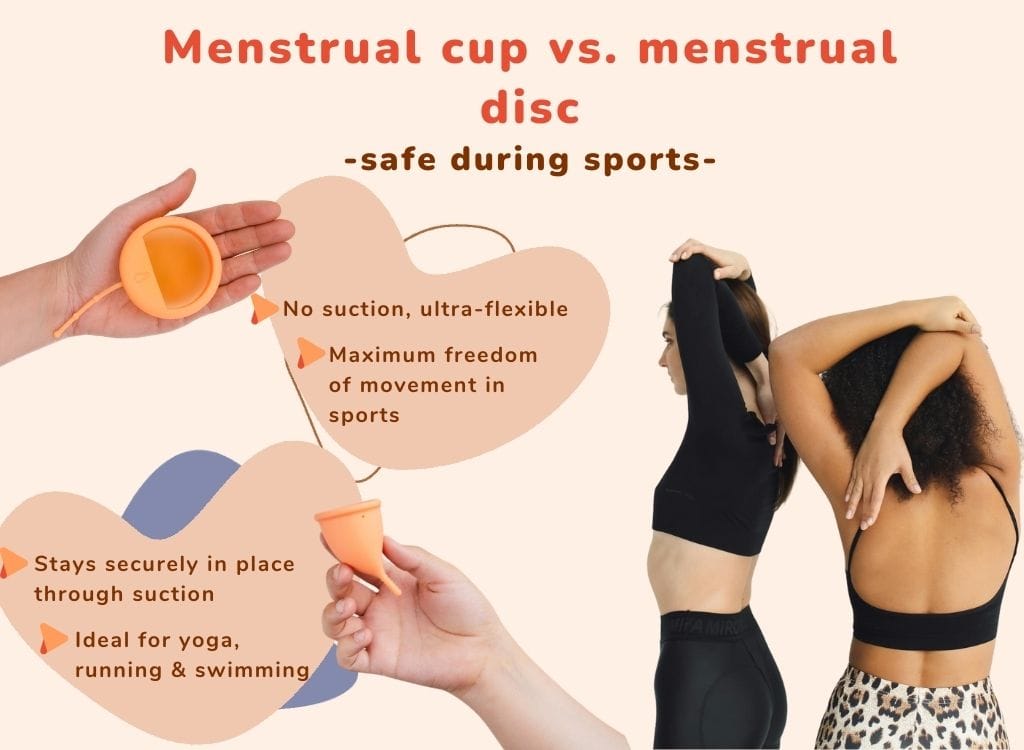
What about the menstrual disc during sport?
The menstrual disc is another great option for active days. The PapayaCup Menstrual Disc (PapayaDisc), for example, is ultra-flexible and seals without creating a vacuum by resting at the base of the cervix. This means you don’t feel it at all while moving. A correctly inserted menstrual disc is designed to stay reliably leak-proof – whether during movement, sport or even while you sleep. Many Papaya fans appreciate the freer sensation of wearing a disc without the suction effect of a cup. Especially if you have a weaker pelvic floor or dislike the slight suction feeling of a cup, you may find the disc particularly comfortable.
Menstrual disc for sport – the benefits:
Just like a menstrual cup, the disc offers up to 12 hours of leak protection. It often holds slightly more fluid than a cup, which can be especially helpful on heavier flow days. You can do anything with it – from strength training to swimming. There’s no vaginal ring or string to feel. Once inserted correctly, the disc tucks securely behind the pubic bone and stays in place, even during jumping, stretching or quick movements. Another unique feature of the disc is that you can (theoretically) wear it during sex – while not directly relevant to sport, it demonstrates just how comfortable and flexible it really is.
Tips for use:
It’s best to practise inserting the menstrual disc beforehand in a relaxed setting. The principle is a little different from a menstrual cup: the disc is folded like a flat “plate” and pushed deep into the vagina. Take your time to find the technique that works for you. Once you’ve got the hang of it, the disc becomes a real game-changer for freedom of movement during your period.
Advantage: freedom of movement & no chafing
Both the menstrual cup and the menstrual disc are made from soft medical-grade silicone. With them, you can move freely – ride, cycle, or train – without worrying about chafing or slipping, as can happen with pads. There’s also no swelling sensation in water like with tampons. You’ll especially notice the difference on long runs or hikes: the menstrual cup and disc give you freedom, almost as if you weren’t on your period at all. Just make sure to insert them with clean hands before sport and place them correctly. Then nothing stands in the way of a more comfortable, worry-free workout.
Period tips for your training
To round things off, here are some practical tips to make sport on “day X” as comfortable as possible:
- Choose the right period product: As mentioned above, menstrual cups or menstrual discs can make life much easier when exercising on your period. You don’t have to change them as often and you can move more freely. If you’ve previously only used tampons or pads, try a cup or disc at home on a safe day – many never want to go back afterwards.
- Comfortable clothing: It sounds simple but makes a big difference. Wear sportswear that doesn’t feel restrictive. Today might not be the best day for the tightest high-waist leggings – instead, go for something softer around the stomach. Dark trousers can give you extra peace of mind if there’s ever a small leak, and breathable underwear helps prevent skin irritation.
- Warm up and cool down: During your period, take extra time for warm-up and cool-down. Gentle warm-up movements prepare your muscles and ligaments (which may be a little more sensitive due to hormonal changes). After exercise, stretching and a warm shower help your body relax and can prevent cramps from returning.
- Stay hydrated & add magnesium: Keep an eye on your fluid intake, especially if you’re sweating. Your body loses both fluids and minerals through bleeding and perspiration. Water or diluted fruit spritzers help keep your circulation stable. A magnesium-rich drink (for example, water with a magnesium tablet) can also ease period cramps, as magnesium helps muscles relax.
- Take breaks: Allow yourself short pauses during your workout if you feel you need them. Today isn’t the day for pushing through at all costs. Intervals with a quick rest, a sip of water, or light movement are absolutely fine.
- No comparisons, no pressure: Every period is different, every cycle is different. Don’t compare yourself with others or even with your own good days. If things feel slower today, that’s perfectly okay. You’re already doing something positive for yourself – even if it’s “just” a few gentle stretches or a walk around the block. Listen to your body – it will thank you.
Frequently asked questions (Q&A) – exercise during your period
Generally in a positive way. Moderate exercise can ease symptoms and improve your mood. Only excessive training can, in extreme cases, disrupt the cycle (for example, missing periods in high-performance athletes). For most of us, movement is beneficial for the cycle.
Yes, exercise has an impact, but don’t worry: you don’t need to fear that moderate workouts will “worsen” your period. Many women even report that exercising during their period helps them feel better. Regular movement can help balance your hormones. Extreme physical strain can influence the cycle, but normal training usually has only positive effects.
Absolutely. Movement improves blood circulation and relaxes the cramped uterus, which helps relieve pain. Your body also releases endorphins that reduce the sensation of pain. Even light activity such as a walk or gentle stretching can noticeably reduce period cramps. But listen to your body: if the pain is too strong, give yourself rest or warmth first and try again later.
Yoga poses such as child’s pose, reclining butterfly, or gentle backbends are especially recommended because they relax the abdomen and back. Light cardio activities like walking or cycling also help as they support circulation. In general: choose what feels good and doesn’t strain you — even gentle stretching on the couch counts.
Absolutely! A menstrual cup stays securely in place thanks to light suction, even during intense activities. Whether jogging, yoga, or swimming — the cup stays reliably leak-free. Choosing the right size and getting a bit of practice with insertion is key. Then you won’t even notice you’re on your period while exercising.
Yes, just as much. The menstrual disc (for example the PapayaDisc) stays in place without suction and is often even less noticeable during sports than a cup. It sits higher, is flexible, and leak-proof — perfect for weight training, yoga, or swimming.
Listen to your body, move gently, and take breaks when needed. Choose soothing activities instead of intense workouts. A warm bath or heating pad after exercise adds extra relaxation. Also pay attention to:
- drinking enough water
- magnesium-rich nutrition
- comfortable clothing
- a period product you trust — such as PapayaDisc or PapayaCup
Conclusion: moving through your period with self-care
Exercise during your period is not a taboo – on the contrary, it can help you feel better. Whether you choose gentle yoga, go for a jog or simply dance a little: everything is allowed, as long as it feels right for you. On some days, cuddling up on the sofa may be better than heading to the gym – and that’s absolutely fine. The most important thing is to listen to your body and give it what it needs, whether that’s activity or rest. With the right tips and tools – such as a well-fitting menstrual cup or disc for leak-free protection – you can feel comfortable and strong even during your period.
Stay active, but be kind to yourself too. Your body is working hard during menstruation, so support it with care and understanding. This way, you can handle every phase of your cycle both physically and mentally. 💜
Want to make your period as comfortable as possible? Then give it a try: the PapayaCup Menstrual Cup and the PapayaCup Menstrual Disc give you maximum freedom of movement during sport, without compromise. You’ll also find more guidance in our practical resources – explore the Menstrual Cup Guide or the Menstrual Disc Guide at papayacup.com.
Start your next active period week feeling confident and well equipped – PapayaCup is here to support you!

